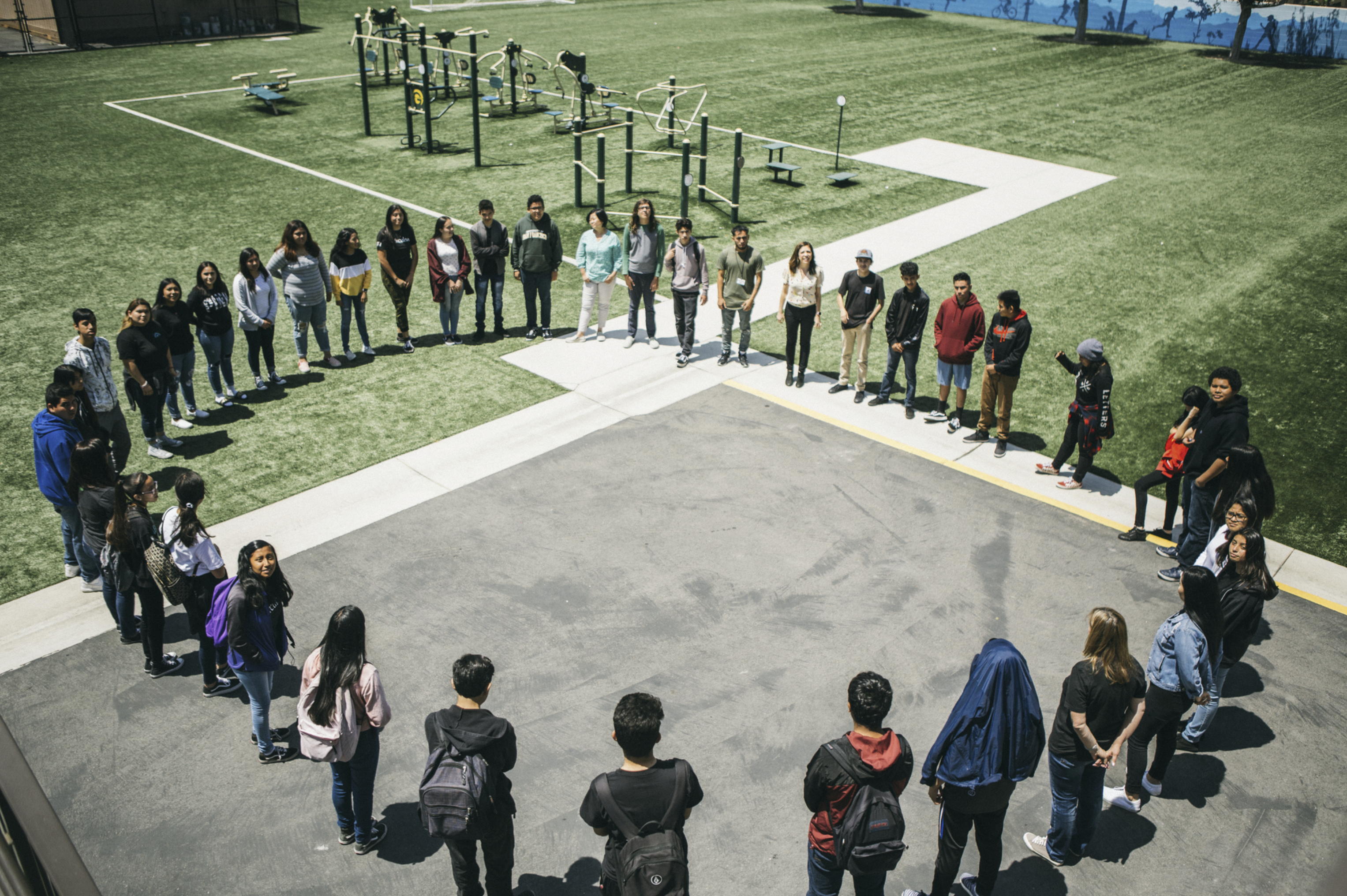In response to the recent protests against police brutality, XQ is putting together content that highlights how structural racism, the carceral system, and economic inequality play out in our school systems. To begin, we’re starting with a look at how restorative circles can lead to productive conversations and justice.
How are the youth processing thoughts on the state of the world right now? Apparently, much like how adults are.
We’re living in a surreal time. The coronavirus pandemic has quarantined us for 100 days. And the murder of George Floyd catapulted ongoing protests and unrest in the streets. Members of our society are walking in the streets, protesting pervasive, systemic racism, and inequality—which is symptomatic of the larger disregard for Black life in our nation’s systems and structures. There is so much going on—to absorb and process. Many of us are struggling to make sense of our realities, impact change, and just make it through another day.
In response to these overlapping and interconnected crises, a diverse group of members from the XQ Student Advisory Committee recently engaged in a virtual restorative circle where students were allowed to voice what was on their hearts and minds during this time. The students came from XQ’s Student Advisory Committee, which was formed in order to infuse student voices into XQ tools and products, encourage students to rethink their educational experiences, and create young leaders through mentorship and professional development. As expected, the students had a lot to share about grief and made clear how much all students need a space for processing during this time.
Historically and presently, restorative circles are used to build and strengthen communities, heal harms, and foster connectivity in ways that allow all community members to thrive and feel valued—among many other functions. They are used to reintegrate students who have been suspended, to reconcile and resolve harm between two parties, to address concerns or clarify meaning (think lesson plans and activities, policies, processes, systems, structures), to celebrate achievements and milestones, to plan and organize–anything, really!
The students involved in our restorative circle shared about themselves, the pros and cons of things returning back to ‘normal’, perceptions and opinions among their peers, and their hopes and fears for the future. Most inspiring, they reflected on what action might look like for them, individually. Through this sharing, students were able to see their commonalities, as well as recognize and learn from their differences. This helped to illuminate areas where they might be able to support one other, collaborate, or help each other to become more informed.
In this circle, we only made it through a few of the planned prompts, which is not uncommon. While structured, circles move organically in the direction and at the speed in which the participants steer it. The process was a testament to how much youth have to share, and how much they want and need to be heard. When we give students the ability to share in this way, we build their confidence and self-esteem, inspire and encourage greater participation in communities, and give young people increased ownership over their learning, growth, and development. This discussion was necessary, even if it was just a starting point. It was a reminder to the adults to make space for these conversations. Educators, family members, and adult leaders—we all have a responsibility to encourage and engage in these conversations. Conversations lead to actions, and action leads to change, and change impacts us all.
During the closing of the circle, students were left to consider the words of Dr. Angela Davis: “I am no longer accepting the things that I cannot change. I am changing the things I cannot accept.” While the burden of resolving the nation’s and society’s issues around racism is not theirs solely, young people, their perspective, and their energy are desperately needed in this fight. And it’s important that they know we adults will be right there with them—fighting and supporting until our common goals and demands are met.
Listening Circles are incredible ways to engage with students on topics that may seem difficult to broach. To learn more about how you can hold restorative circles in your classroom, extracurricular, or peer group, check out our post on Using Restorative Circles to Have Tough Conversations on the Rethink Together Forum!
More Resources on Equity in Education:
- The Civil Right of Education, By the Numbers
- Rethinking Education Equity in Education with an XQ School Leader
- Equity & Education on MLK Day
- Computer Science through the Lens of Equity & Social Justice
Student Voices on Equity:
- Student Voice: We Have an Opportunity to Reimagine Our Future
- Student Shares All: How to Support Students with Disabilities
TAGS:



 Tweet
Tweet 



